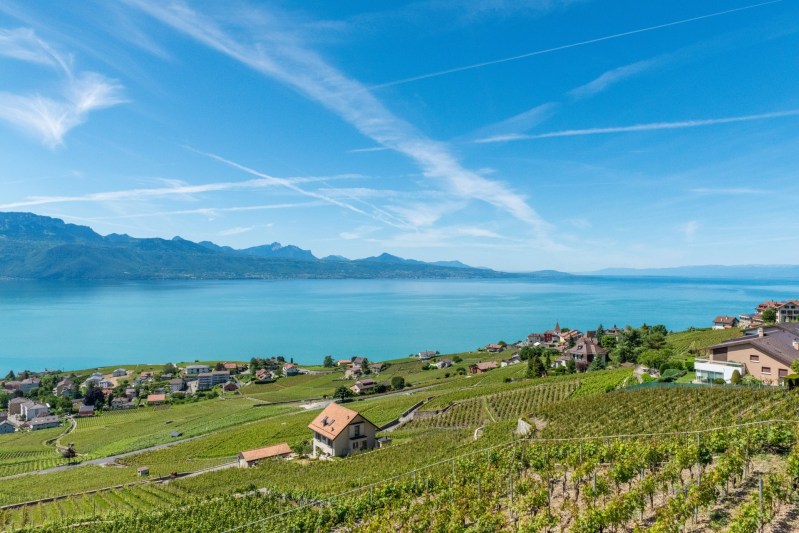
When you want to escape, Switzerland provides the ultimate playground. Jagged peaks cut into the horizon, the high alpine putting nature’s majesty on display. Hiking and biking trails let you roam and explore, with vast meadows and vistas around every turn. World-class terrain greets skiers and snowboarders, like Mont Fort at 4 Vallées in Verbier. Cuisines like fondue or Älplermagronen offer unique tastes and textures.
That’s a lot to take in, and if it’s your first time, you might be wondering the best time to visit Switzerland. If you’re looking for low crowds and good deals, specific periods let you play on a budget. On the other hand, different seasons feature ideal weather or winter fun. Whatever you’re after, we’ll steer you right on your alpine vacation.
The Alps on a budget or perfect weather? Here’s when to visit Switzerland

As you plan your Swiss vacation, what do you hope to experience? Maybe you just want to be there, no matter the season, and want the best deal to make it happen. You could be a skier or snowboarder, thirsting for alpine adventure. If you’re a food enthusiast, chocolates and cheeses await throughout mountain villages. Each travel season has pros and cons, and we’ll provide the details to point you in the right direction.
Spring offers low crowds and good deals
From April through mid-June, the shoulder season sees winter crowds disappear and prices drop. With reduced costs on plane tickets and hotel rooms, you’ll have extra cash for a chocolate tour in Geneva or a tram ride up the Matterhorn.
As the snow melts off the peaks and wildflowers bloom, a perfect panorama surrounds your morning hikes (or trail runs). April features average temps in the 60s, with May bringing increased rain. In June, as summer sets in, long, 70-degree days bring all-day refreshment.
In spring, we’d visit Bern, Switzerland’s capital, a UNESCO World Heritage site with historic buildings, numerous fountains, and natural surroundings. After a walk through the city, swimming in the River Aare would offer cool relaxation.
Summer is nice, but crowded and expensive
No matter the travel destination, weather plays a central role in the experience. With summer’s balmy conditions and hiking opportunities, Switzerland’s high season costs extra and brings crowds. Since the snow’s disappeared from the peaks, you can hike to your heart’s content, and experience the high alpine. Take in a music festival or swim in a lake, and wonder if you’ve arrived in paradise.
But those ideal experiences come with a cost, with pricing as much as 50% more than shoulder or low seasons. Not only that, but the country’s beauty can be interrupted by numerous travelers getting their fair share.
We’d visit Lake Geneva, take a cruise on the pristine waters, and then enjoy fondue as the sun sets. Talk about picture-perfect.
Autumn is refreshing and economical
The initial weeks of fall, from mid-September through October, bring brisk air and stunning foliage. Watch the surroundings change as you roam the mountains, and enjoy cooler temps from the 50s to the 70s. As winter inches closer, the alpine chill is a special feeling. Since summer throngs are gone, you can tour villages or take cable cars in peace, take in the scenery, and do as you please.
As a shoulder season, fall lets you travel on a budget for a European getaway that won’t break the bank. That, along with autumn’s weather and sights, make it an excellent time to visit.
Fall is ideal for a panoramic train ride on the Bernina Express, which traverses the 65-meter-high Landwasser Viaduct and passes the Morteratsch glacier. Get your camera ready.
Winter offers exceptional skiing and snowboarding
The Swiss Alps are different. One look at the Matterhorn shows why. The dramatic peak, its eons-old features cutting and jutting into the sky, is the ideal alpine silhouette. Beyond that, Switzerland’s numerous peaks and resorts — like 4 Vallées in Verbier — offer steeps and challenges few others can. If you want to push your limits, a trip there should be on your bucket list.
But with those qualities come popularity, and from mid-November through March, mountain towns are overrun by winter enthusiasts, bringing higher prices and crowded slopes. You could score a deal early in the season, but snow levels might be low, with little terrain available.
We’d head straight for Verbier, and have a guide show us around. At the end of the day, we’d enjoy raclette at Chez Simon, situated right on the mountain.

When should you visit Switzerland?
It’s nice to save money on a vacation. Whether on plane tickets, lodging, or activities, getting more for your dollar is a satisfying feeling. But if you’re after specific things — like skiing, swimming in a mountain lake, or hiking the high alpine — you’ll have to pony up. For those who want to visit Switzerland and spend as little as possible, try spring or fall. But if it were us, we’d save up for a winter journey to Verbier or a summer escape to Lake Geneva. That seems worth it to get the most out of the country’s mountains, culture, and cuisine.



